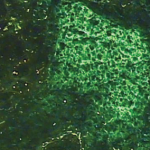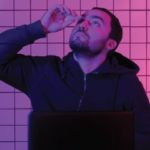Also, the now popular ANA by ELISA may not detect the ANA positive by immunofluorescence, and the “reflex” SS-A antibody is never obtained.
Indeed, the entire syndrome of “subacute lupus” (ANA-negative, SS-A positive) simply derives from the artifactual denaturation of the SS-A antigen during fixation of the slides for immunofixation.
We are continually confronted with the patient whose ANA was positive in one lab, while negative in another lab. It is more likely that this is due to the laboratory method employed than to significant alterations in the patient’s serology.
A poorly appreciated variable is “who draws the screening laboratory test.” I will present an example in the form of a joke.
Three rheumatologists—an American, a Japanese and a European—visit an epidemiologist to compare the results of their clinical cohorts. Each rheumatologist notes a different frequency of extraglandular manifestations and differences in their cohorts. The initial suspicion that leaps to mind is, “Does this reflect a difference in their genes or environment, such as food intake?”
Perhaps, but a simpler explanation may play a part. In fact, after years of having these discussions, I think most commonly it depends on who orders the ANA and RF blood tests.
The American patient with complaints of fatigue has the ANA drawn by the family practice doctor or nurse practitioner—who sends the patient off to rheumatology clinic. The wait is up to six months to be seen, and anyone really sick (renal, pulmonary, hematologic, neurologic) is sent to the other specialty clinic, where they are diagnosed with SLE or RA—never to be reclassified.
The Japanese patient has a better chance of being labeled as SS, because the primary care doctors send patients to the rheumatology clinic based on symptoms of rash or arthritis, and the rheumatologist (but not the primary care doctor) is allowed to order the ANA panel.
The Indian patient in large medical centers has to be really sick to even make it through triage to a clinic, where dry eyes and mouth are an annoyance rather than a condition, such as uveitis. Once in the Indian rheumatology clinic, the number
of rheumatologists is so meager and the cost of care so prohibitive that the potential for follow-up for prior problems is limited at best.
European rheumatologists, whose grants are not generally judged on the number of cytokines cloned since the last review, have quietly been organizing their patients into cohorts and cross-referencing to normal health data banks. The basis for grants is cooperation rather than the number of cytokines examined.


